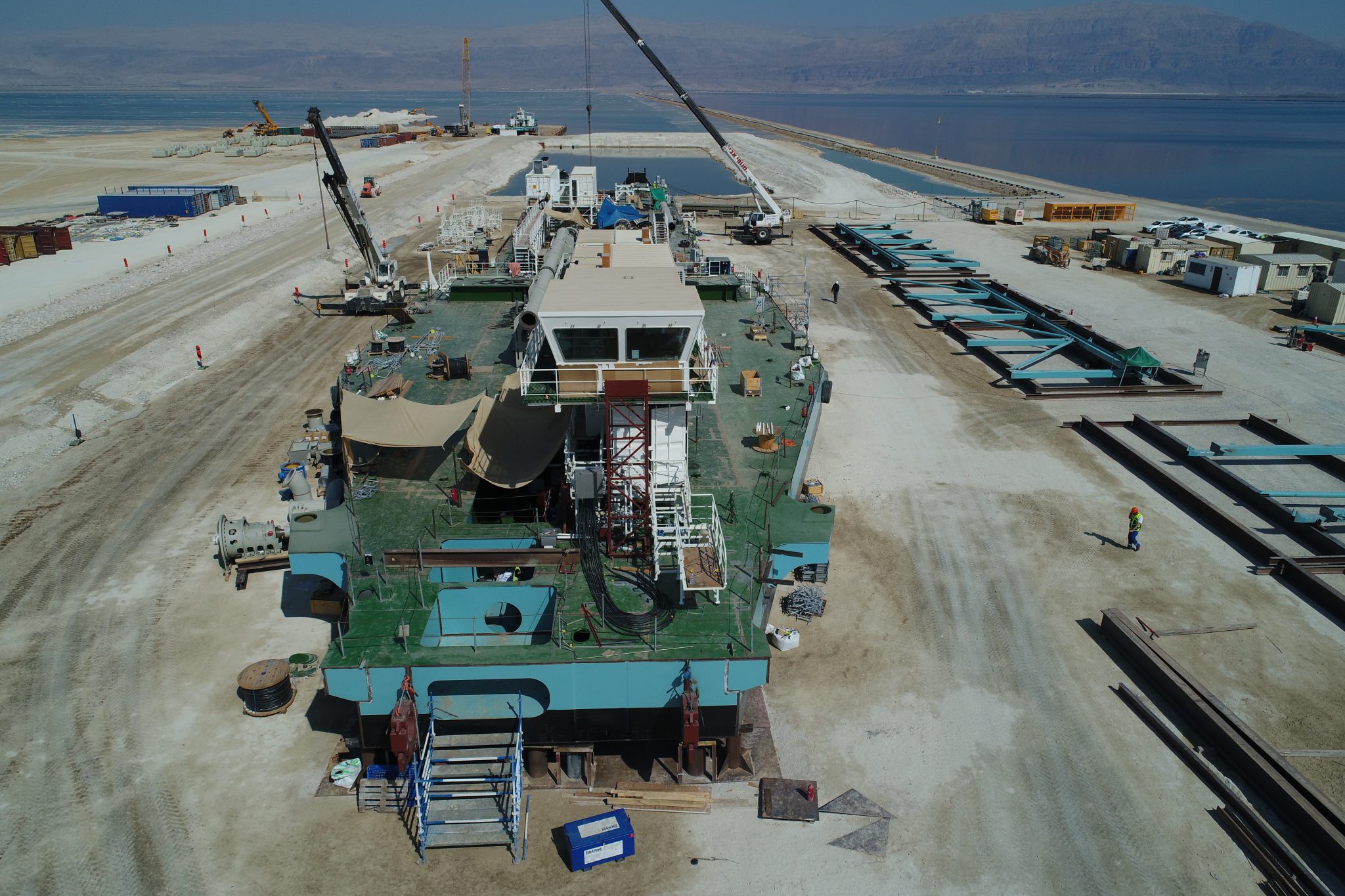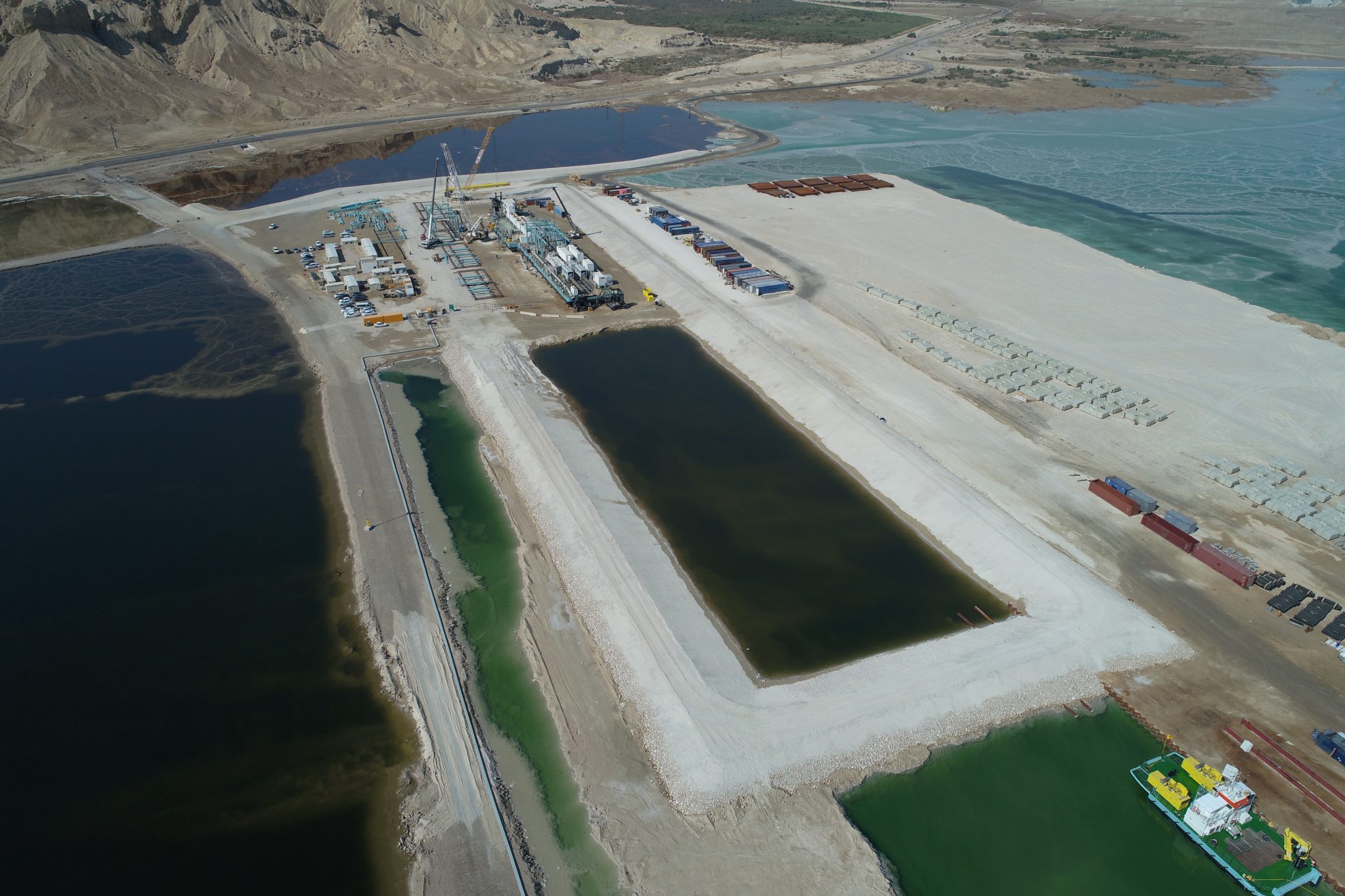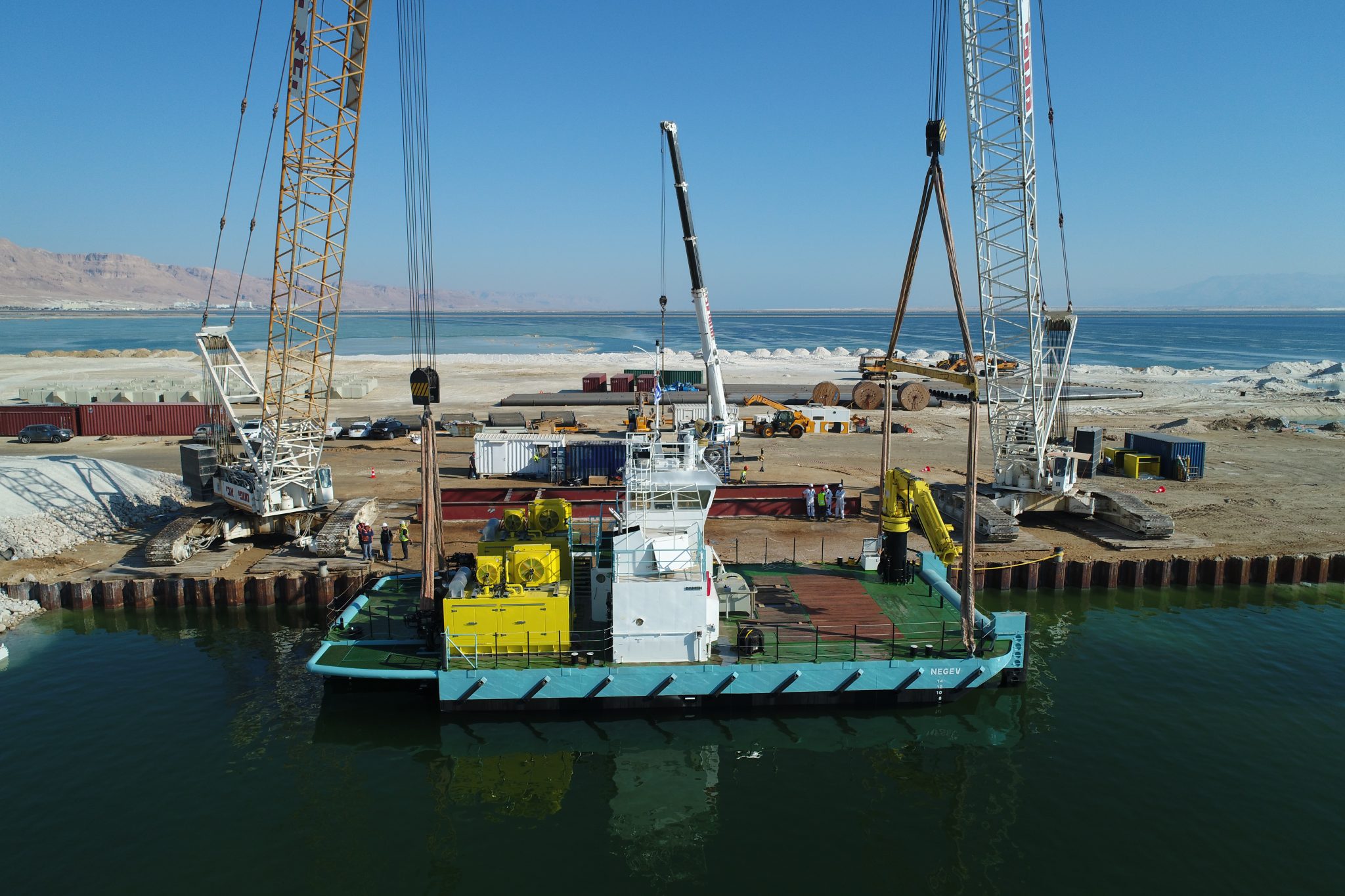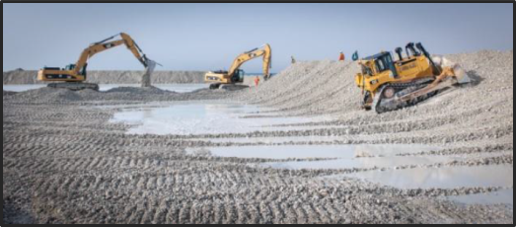Salt Harvesting
The hotels are situated on the shores of Pond 5 as there is a relatively stable shoreline, compared to the Northern basin of the Dead Sea. ICL Dead Sea’s original construction and ongoing maintenance of Pond 5 enables the thriving hotel and tourism industry in the region. The livelihoods of thousands of people is dependent on the stable water level of Pond 5.
The goal of the Salt Harvest project is to maintain and stabilize the water level of Pond 5 by harvesting and transferring the salt to the northern basin of the Dead Sea.
ICL Dead Sea’s production process requires maintaining a fixed volume of solutions (brines) in Pond 5. Minerals from the Dead Sea are extracted by way of solar evaporation, whereby salt precipitates onto the bed of the salt ponds, the first evaporation ponds of ICL Dead Sea. The salt pond known as Pond 5 is the first and largest pond in a series of ponds, having an area of approximately 80 square kilometers. The evaporation processes give rise to concentration of the brines and the sinking of the salt to the floor of the pond. The remaining brines are rich in potash, magnesium and bromide. Approximately 20 million tonnes of salt precipitate at the bottom of Pond 5 every year, creating a 20 cm layer of salt annually. The layers of salt are accumulated one on top of the other. The precipitation of salt reduces the amount of brine in the pond. The production process of the raw material requires that a fixed brine volume is maintained in the pond. Therefore, the pond level has been rising each year according to the rate at which its floor rises.
The rise of the water level in Pond 5 above a certain level may result in structural damage to the foundations of the hotel structures situated close to the water’s edge and to other infrastructure on the western shoreline of Pond 5. Therefore, it was decided to initiate a project to protect the hotels’ beaches and infrastructure. The project has been managed for the past few years by the Dead Sea Preservation (Government) Company. As part of the coastline defenses project, and as a temporary solution, dikes and other coastline defenses were constructed on the western beach of the pond, the area near the hotels.
However, in order to provide a permanent solution for the rising water level in the pond, a Salt Harvesting Project was agreed upon the Israeli government and established. This solution requires ICL Dead Sea to annually harvest approx. 20 million tonnes of salt from Pond 5, and transfer it to the Northern Basin of the Dead Sea, thereby stabilizing the water level. The salt harvest will be performed by one of the largest electrical dredgers in the world. This is a major project that requires specialized machinery and infrastructure. ICL Dead Sea has completed the necessary infrastructure and expects to begin dredging in the second half of 2020.
Once the salt harvest begins, in the first stage, the salt will be stored on the east side of the pond, to minimize the visibility of the salt piles. In the second stage, the salt will be transferred to the Northern Basin of the Dead Sea.
The agreed solution would enable further development in the dead sea area. New hotels are now planned to be established, and the Neve-Zohar town (also adjacent to Pond 5) is developing a community expansion – both of these are made possible due to the pond level stabilization, which will be the outcome of the salt harvest.
ICL will bear 80% of the cost of the Salt Harvest and the Israeli government will bear 20% of the cost.
In April 2017, ICL’s Board of Directors approved a budget of about $280 million to conduct the Salt Harvest project. This budget will be spent over the next 12 years and constitutes ICL’s 80% share of the cost of the project.
ICL’s Board of Directors approved a budget of approx. $280 million to conduct the Salt Harvesting project in the Dead Sea.
The Dredger
In October 2017, ICL Dead Sea signed an agreement for the execution of the first stage of the Salt Harvesting Project with Holland Shallow Seas Dredging Ltd., to commence construction of a unique dredger designed to conduct the harvest. It is the largest of its kind in the world. The dredger is electric and does not require diesel fuel for its operation. This minimizes the risk of water pollution due to fuel leaks. This dredger is also uniquely quiet as this was one of the demands made by ICL to the dredger supplier. The dredger is expected to enter commence during 2020.




For more information about the coastline defenses and the permanent solution, see “Item 4 – Information on the Company— D. Property, Plant and Equipment— Mineral Extraction and Mining Operations” in ICL 2019 Annual Report.
